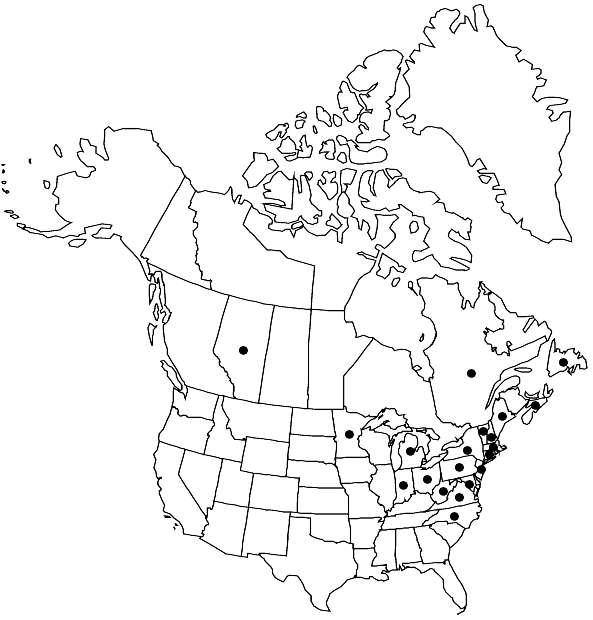Sphagnum isoviitae
J. Bryol. 17: 2, figs. 1, 2. 1992,.
Plants moderate-sized and moderately weak-stemmed to moderately stiff; green, brownish green to brown; capitulum flat-topped and 5-radiate, terminal bud often visible. Stems pale green, rarely with red coloration, superficial cortex of 2 layers of moderately to well differentiated cells. Stem leaves triangular to lingulate-triangular, equal to or more than 0.8 mm, spreading to appressed; apex acute to apiculate, hyaline cells mostly efibrillose and nonseptate. Branches ± straight and somewhat tapered, usually 5-ranked, leaves not greatly elongated at branch distal end. Branch fascicles with 2 spreading and 2–3 pendent branches. Branch stems green and often reddish at proximal end, with cortex enlarged with conspicuous retort cells. Branch leaves narrowly ovate-lanceolate, greater than 1.2 mm, straight, slightly undulate and weakly recurved when dry, margins entire; hyaline cells on convex surface with 1 pore per cell in apical end, on concave surface with round wall thinnings in the cell ends and angles; chlorophyllous cells in transverse section triangular to ovate-triangular and well-enclosed on the concave surface. Sexual condition dioicous. Spores 24–33 µm; finely papillose on the superficial surface.
Habitat: Forming carpets in a wide variety of poor to medium fen habitats of both mire edge and mire wide character, not found in ombrotrophic mires
Elevation: low to moderate elevations
Distribution

Alta., Nfld. and Labr. (Nfld.), N.S., Que., Conn., Ind., Maine, Md., Mass., Mich., Minn., N.H., N.J., N.Y., N.C., Ohio, Pa., Vt., Va., W.Va., Europe.
Discussion
Sporophytes are uncommon in Sphagnum isoviitae. See discussion under 26. S. brevifolium and 28. S. fallax for distinction from these similar species. Sphagnum isoviitae has no range overlap with S. pacificum, the other North American species of the S. recurvum complex with apiculate stem leaves; the sharply recurved branch leaves of the latter, however, would separate it easily in any case. Spore features are those given by Flatberg.
Selected References
None.